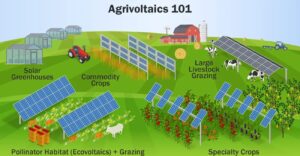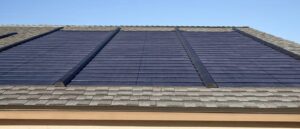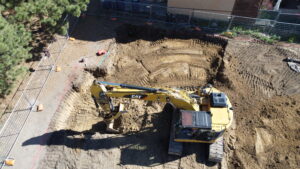Green roofs are a fairly new occurrence in the United States. Chicago and Portland are the two cities that have the highest number of green roofs. There are a few disadvantages that can be reasonably offset by careful planning and the inherent benefits to green roofs. Careful consideration should be given before moving forward as site selection and climate can have a large impact on the success of a green roof. Read on for a quick discussion of the more common disadvantages and advantages.
Disadvantages:
Increased installation costs – often double that of a more conventional roof
Increased maintenance costs –potential water, weeding etc. required
Increased structural requirements – can vary greatly by type of green roof
Difficult to service roof if needed – extensive roof are more easily serviced
Advantages:
Storm Water Management – Green roofs help reduce the amount of water that runs off a roof and into municipal storm water and sewage treatment systems. Intensive systems are the best at this due to the deeper growing medium. This also acts as a first step in water purification. The vegetation and growing medium will trap contaminants from rainwater.
Heat Island Effect – If you have ever stepped from an asphalt parking lot onto grass and felt the difference in temperature, you know what the heat island effect is. Green roofs can substantially reduce the ambient temperature on the roof of a building and that contributes to overall cooling a local climate.
Help filter pollutants from air – As briefly touched on above, green roofs can help filter contaminants from the air. Studies have shown that green roofs can remove as much as 95% of heavy metals from the atmosphere.
Increased lifespan of roof – We have all seen what the sun can do to our BBQ grille covers and car paint over the years. Since the green roof covers much, if not all, of a conventional roof, that roof is going to last much longer. Some studies have shown up to 3 times longer. Most properly installed commercial roofs have a 30 year warranty.
Regulates interior temperatures – By reducing the heat island effect the green roof is also reducing how much heat there is to move through the roof. This combines with the great mass and creates a roof that is insulated quite well in both the summer and winter. The amount depends on the thickness of the growing media and its’ water saturation.
Aesthetic and Use Benefits – A green roof is a more attractive roof. Think of how much potentially usable space is wasted just covering the building. Imagine incorporating outdoor spaces for use by the building tenants. For some extra cost a building owner gets more usable space that can be a very attractive selling point to potential tenants.
Ecological Benefits – Green roofs can attract birds, butterflies and bees. Some buildings are known to harbor large bee farms creating another potential revenue stream for the building owner.
There are other considerations with green roofs but this covers the most common and influential. When choosing any building method or component it is important to analyze how the advantages and disadvantages compare.










